
Completing a big hill round takes dedication, but how much more blood, sweat and tears are required if you're going for the fastest time? We speak to three recent record breakers: Math Roberts, who set an impressive new time on the Paddy Buckley Round; Finlay Wild, who's knocked 90 minutes from the Ramsay Round; and James Forrest, on the fastest self-supported backpacking circuit of the Wainwrights.
Hill running (and walking) records have been tumbling this summer. As athletes hit the ground running post-lockdown, and with an empty calendar of races that might in more normal years occupy people's efforts, attention has turned to some of the biggest routes and best-known challenges in UK hill running.
Highlights of the season so far include:
The fastest ever Munro round from Donnie Campbell:
Carol Morgan's Lakes 24 Hours women's record:
Damian Hall's Pennine way record:
Sabrina Verjee becomes the first woman to run the Wainwrights:
John Kelly completes a five-day Grand Round of the Ramsay Round, Bob Graham Round and Paddy Buckley Round:
Kelli Roberts sets the Fastest Known Time (FKT) for a female Cuillin Traverse:
Sabrina Verjee breaks the women's record on the Pennine Way:
On 30th August, North Wales-based Matthew (Math) Roberts set a new record for the Paddy Buckley Round, with a time of 16 hours 37 minutes, taking nearly an hour off Damian Hall's previous best of 17 hours and 31 minutes. Snowdonia's entry in the UK's big three rounds, alongside the Bob Graham in Lakeland and the Ramsay Round in Lochaber, the Paddy Buckley has a fierce reputation and covers 47 summits, 28,000ft (8,500m) of ascent and 61 miles.
***
Running solo and unsupported, the following day, 31st August, Finlay Wild set a blistering new time of 14 hours 42 minutes on the Ramsay Round, breaking the previous record by around one and a half hours. This classic 58-mile Scottish highland challenge takes in 28,500ft (8,600m) of ascent and 23 Munros including (among others) Ben Nevis, the Aonachs, the Grey Corries and the Mamores.
***
In early September James Forrest added a Lake District contribution to the recent run of big achievements, completing an unusual fully self-supported round of all 214 Wainwright fells. Tackling the route as a continuous solo backpacking journey, rather than a run with pacers and logistical support, James walked the 525km route, notching up 118,000ft (36,000m) of ascent, in 14 days and 11 hours, carrying all his kit and supplies, and wild camping for 14 nights along the way.
Here we talk to James, Finlay and Math about what it took to set their new records:
Daring to dream
"I was motivated by the chance to bag a record," says James Forrest.
"I've really enjoyed watching the incredible efforts of ultra-runners like Steve Birkinshaw, Sabrina Verjee and Paul Tierney – amazing feats of endurance. They inspired me to want to experience the Wainwrights in the ultimate way, a single round. But I'm not a runner, I'm a hiker, and I wanted to complete my own round in my own way and own style."
Getting through lockdown
"At the start of lockdown we couldn't run in the hills but I was grateful to live in a place with loads of low level trails and paths to train on," says Lochaber-based Finlay Wild, who is sponsored by Mountain Equipment and Norman Walsh UK.
"Motivation for running fluctuated for a lot of people in such an unpredictable time. I generally kept up my running and did some flat work, and then as restrictions eased we were lucky to live right next to the mountains so I could get out and run on local hills."
***
"I live up around Bethesda and have the Carneddau on my doorstep, so I could carry on mountain training as per normal," says Math Roberts.
"I did a Paddy a month [prior]. I had a mate who wanted to do one and we had a big 10-hour training run and felt good. I decided to go for one fairly last minute and managed to piece together a bunch of friends and ended up being six minutes slower than the record then.
***
"I just went for walks and runs around my home in NW Cumbria," says James.
"Like many people, I had probably been a bit lazier than I should have been during lockdown, so my fitness levels weren't quite at the optimum level for the start of this challenge. But I quickly seemed to adapt."
Logistics and planning: vital, or not so much?
"I'd been thinking about [the Wainwrights record] for about a year, but lockdown messed around with some of my plans and timings," says James.
"However I finally got around to it in late August. Inov-8 believed in my idea and agreed to sponsor my journey too, which helped give me the confidence to take the time off work, take the leap of faith and just go for it."
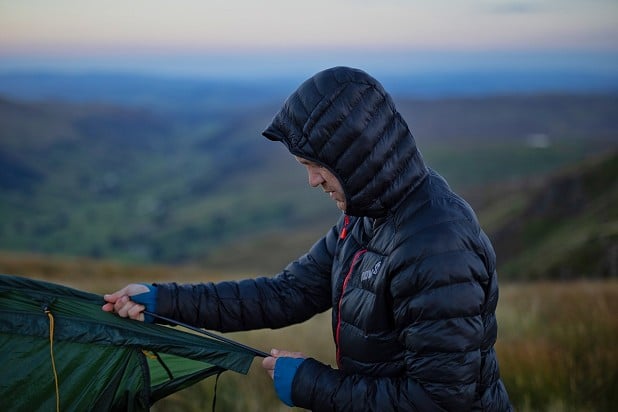
"The biggest logistical challenge was sorting out the stash boxes. It was quite time-consuming. I had 8 re-supply boxes stashed across the Lake District. They were left in 'safe' but publically accessible locations, strategically placed so I would pass them every few days. This meant I never had to carry more than two days of food at any one time. The boxes were simply plastic storage boxes – just normal household ones – sealed with gaffer tape. Inside I had expedition food, snacks, spare socks and clothes, some toiletries and camping gas.
"I had to work out the exact amount of food I needed in each box, figure out where I could stash them, and then drive them around the Lakes and leave them in place. I stashed the boxes in places like farmers' barns, a church and behind a pub – I just asked random people/businesses if they'd let me do this, and thankfully they did."
***
"I'm not very organised with logistics planning," says Finlay.
"If you have a big machine of support planned then it is harder to readjust if the weather is bad on the planned day, for example. I was able to watch the forecast and just decide two days before the round that I would go when I did."
Reccying your route - how much does prior knowledge help?
"[Between my first and second Paddy Buckley attempt] I reccied a lot of the route again, because I knew on my first attempt I'd messed up a load of the lines and I could shave off a good 15-20 minutes by improving there," says Math.
"I eased down a bit for the last week and then got a really strong support team together..."
***
"I've really found reccying to make a huge difference," says Finlay.
"Psychologically you can anticipate running the route at a fast pace, you can thoroughly check out any shortcuts or slight trods that might help and also visualise the route and imagine yourself completing. But from a more practical point of view, it also saves time as you then don't need to navigate much. It sounds obvious but doing record attempts in good weather is such a key thing: I didn't need to take the map or compass out at all during my run. Knowing you are going the right way means you don't get distracted (by any doubts or map checks, for example) and can just concentrate on pushing on.
"In March 2020 (just before lockdown) myself and previous summer Ramsay Round record holder Es Tresidder attempted a Skimo Ramsay Round - we went clockwise and ended up bailing out in the Mamores for various reasons in what was an incredible 24.5hr day. I've never done the full Ramsay Round before."
"But I know the terrain of the Tranter Round really well [he's the Tranter record holder - Ed.] which is about two-thirds of the Ramsay and most of the more technical terrain. I've done all the other sections of Ramsay's before and was confident I knew them well enough, although I reccied the descent from Stob Coire Sgriodain to Fersit specifically as I knew it was tussocky, pathless and a bit awkward.
"Knowing the Ben Nevis descent well just meant that I didn't need to devote any thinking power to which way to descend, I could just get on with it [Finlay is multiple times winner of the Ben Nevis race - Ed]. But I wasn't particularly fast down the Ben after such a long run, and it's such a small section of the whole round that gaining a few minutes on a speedy descent wouldn't make much difference to the overall Ramsay time - whereas in the Ben Nevis race gaining two mins on the descent would be a significant margin.
"You are free to choose which direction to do [the Ramsay Round] in. I went anticlockwise, which is the same as the last three record holders. I think this is a good direction as you get the biggest group of mountains out of the way first (Mamores), including a few out-and-back ridge diversions, and also I felt I would be relatively fresh for the 10km valley run after the Mamores. There's something very special about running the Grey Corries towards the looming Ben, and of course, finishing down the Ben itself. Also, that just means a steep decent direct to the Youth Hostel whereas there is quite a run out along forestry track to get to the Mullach climb (so doing it in reverse means a track run on tired legs)."
***
"I'd previously completed two rounds of the Wainwrights, over many years, so I was pretty familiar with the peaks, paths and terrain," says James.
"Plus I live in Cumbria, so I am very familiar with some areas, particularly the north-western fells. I don't think it was absolutely essential to have prior knowledge, as general hill skills and good navigation could suffice – but the familiarity did help at times for sure.
"I had studied the route at home, but I didn't do any reccying. I followed the fellrunners' route – the route created by Steve Birkinshaw, which is effectively the most efficient way of bagging the Wainwrights. One thing I was struck by was how much 'off-piste' there was, including bee-lining straight off the side of one mountain to link it to another. I found this a challenge, as some of the terrain was rough and rugged, and the ascents and descent were knee-crushing. I coped fine with it, but every now and then I decided to take the luxury of a longer route just to stick to a path, rather than suffer some impossibly steep cross-country section."
Solo versus supported - what are the pros and cons?
"When I supported my mate on the Joss Naylor challenge, I saw how much work the pacers really had to do and I thought right, I'm going to get at least two strong ones on every leg," says Math.
***
"Most Ramsay Rounds, and I think all the (recent) records have been set using a team of support runners, often split into three or more support legs" explains Finlay, who didn't rely on pacers or other support on his Ramsay Round.
"This obviously has the advantage that the support runners can carry all your food, water and extra gear. They can also run out ahead and lead you if the weather is cloudy (or dark!). When I've been involved in supporting other runners there is also usually a really positive, supportive atmosphere which could of course help if you were going through a rough patch.
"[But] running alone meant I could just concentrate on my own running. I think I'm pretty good at finding an appropriate / sustainable pace for a challenge, so didn't need to worry if support runners were going too fast or too slow, or taking the route I wanted to take (there are a few slight variations). I didn't have to spend any energy chatting to people (though it would have been nice). All my other records have been minimally supported and I do like the simplicity of just heading out into the mountains for a long self-sustained day, where all decisions are mine alone. I decided that I should just carry all my supplies rather than rely on static food or gear stashes - again I like the simplicity."
"Running solo and unsupported I, of course, had to carry all my own food (1.7kg) and gear - my race vest weighed 3.6kg in total when I had full water bottles. As I mentioned, navigation wasn't an issue, and I know the route well. I must have spent quite a few minutes overall in filling up water bottles and electrolyte powder juggling however!"
***
"[Going solo] is true escapism and freedom to be alone in the mountains – it gives you a greater sense of peace and solitude and tranquillity" says James, for whom the solo and unsupported aspect was a key component of his Wainwrights walking journey.
"And the challenge of being self-reliant – facing adversity and difficulty, and getting through it – can be life-affirming.
"[But] mentally it was tough. When I was low, I didn't have any team-mates to tell me a joke, lighten the mood, motivate me, give me kick up the arse, or whatever I needed. It is easy to fall into a spiral of negativity or indecision or self-introversion when you're alone – and I struggled with that when I was genuinely miserable and not enjoying the experience, because of the weather."
The impact of weather and conditions
"I was waiting for a weather window to do the [Ramsay] round, although was a bit anxious I might not get a good one as September was fast approaching, temps were cooling and the nights were getting longer," says Finlay.
"I was actually just at the end of a trip with a friend when I spotted the one-day window for my Ramsay, and we rejigged stuff so I could take advantage of it. There was high cloud all day but perfect visibility. A strongish cool wind which wasn't too disruptive, and the sun came out a bit on the Grey Corries and the Ben - basically perfect conditions for me as I don't run that well in the heat."
***
"The week before [the Paddy Buckley] we had pretty torrential rain and people were being evacuated and all that," says Math.
"That didn't help, but the day itself was high pressure, zero wind, a slight northerly air mass so the visibility was brilliant. It wasn't too warm and everything was just perfect with regards to the weather. The 3rd leg where you go from Moel Siabod over to the Moelwyns, that was boggy as hell but it wasn't dreadful. It was beautiful, especially the last leg. Sunrise on Tryfan and sunset on Snowdon, you know, perfect isn't it?
"If I could do it after some dry weather like we had at the start of lockdown, for me, there's another hour to go off [the record]."
***
"I had a few great, sunny days in the middle, but mostly I was battered by some rather horrific Cumbrian weather," recalls James.
"The atrocious weather transformed the [Wainwrights] journey into a rather gruelling and traumatic experience – I've never felt so utterly miserable and unhappy on a mountain before. I thought the torrential rain and strong winds would never stop. But I'm so happy that I found the strength and resilience to keep going and make it to the finish line – it was really emotional arriving into Keswick, cheered on by friends and family. That moment will stay with me forever.
"Strangely, I think the rain pushed me to go faster. I was utterly motivated to get home as soon as possible – to safety, to dry clothes, to a hot shower and to a takeaway pizza. There was no reason to stop and take photos and I had to keep moving just to stay warm. I had the grit between my teeth towards the end and did about 100km in the last two days."
Staying motivated and keeping up the pace
"I was pretty nervous and excited the night before the attempt, and couldn't sleep that well," says Finlay.
"It was great to just get started, and even better a few hours later in daylight when I was established in my pace and meeting my 15hr schedule split times through the Mamores. I was pretty confident that I could keep up a reasonable pace, and certainly to complete, but wasn't sure how I would feel 10+hrs in.
"Reaching Fersit after about 8.5hrs I was feeling pretty good, although the next long climb from there felt tough and I suffered from a bit of nausea. I had to ease off the pace a bit and stop fuelling for a while. This was a slight concern as I knew I needed to eat and drink loads, but I got it back under control fairly quickly and then got the psychological boost of getting up onto the eastern end of the Grey Corries where you can see the 'final stretch' along to the Ben."
"Back on this very familiar ground, I knew I was going to go the distance and break the record by at least an hour (assuming no catastrophes like a fall going down the Ben screes or something). Later on, I was focussing on going sub-15-hrs which gave me some extra motivation to put in a tough effort up Carn Mor Dearg (the second last climb, which I actually did slightly faster than in my Tranter Round record)."
***
"[On my first Paddy Buckley attempt] I was on a 17:20 schedule (Damian Hall's previous record was 17:31), but I didn't really know," says Math.
"I was doing the splits much too fast and my head went a bit, so it was just pure lack of experience when I didn't get it first time around."
"Legs 1, 2 and 3 went really well and then I blew it a bit on leg 4. At the start of the last leg I thought the record wouldn't go, so I gave up a bit. Nearer the end, I got a second wind and ended up only six minutes off, so I thought I better give it another go.
"The second time around, the schedule was much more precise and then also I had people helping me – strong runners. On the first leg, we were a few minutes up on each split and then we took a direct gully route on Tryfan which slowed us down a lot. I then had a really short rest and set off about a minute behind schedule. I was running on a 17:16 schedule, so I had 15 minutes leeway.
"We finished the 2nd leg a few minutes ahead, then the 3rd leg went really well and I took about 20 minutes off there. I had some great, experienced runners with me on that leg. One of them was saying 'you're going too quick,' but I felt fine.
"The 4th leg, the bogey leg from last time, was brilliant. I started that leg and must have been about 40-45 minutes up. The last leg was hard, I couldn't eat much, but I still ended up ten minutes up on that leg."
***
With a daily average of around 36km, James managed to maintain a pace close to Naismith's rule of around 5km per hour on the flat, if not a little faster.
"But I had some crushingly low moments," he recalls.
"The weather drove me to despair. Plus I was alone, so dealing with the rather demoralising mental lows by myself was incredibly difficult. There were a few times when I was in tears, ready to quit and throw in the towel, but I somehow managed to pull through."
"I tried to stay philosophical and accept that 'it is what it is'" recalls James. "I can't control the weather so there's no point getting annoyed about it. However, that's the theory, it's far more difficult in practice – I did find myself getting utterly irate and angry and frustrated at the weather, almost as if the whole thing was unfair and I was the victim of a great injustice. But I tried to channel that anger into something positive – a bit like a riled footballer who plays better when he's angry – and used it to fuel my fire to walk faster. I wanted to walk fast and hard and make it back to Keswick just so the weather didn't win and couldn't have the satisfaction of defeating me.
"I really don't think of myself as an outdoor athlete. I see the ultra-runners as athletes – members of the fitness elite that can do the impossible. I've never run a marathon, let alone an ultra, and I don't really 'train' for my challenges. I see myself just as a very keen hiker. I've always been very achievement orientated – it was the way I was brought up – so I think that's where my determination comes from. Although I was certainly questioning the wisdom of that approach when I was being battered by awful weather."
Recovering between hill days
"I coped pretty well physically" recalls James, who's 14-day Wainwrights round had the added challenge of recovery between back-to-back hill days.
"I didn't do any stretching or have any special tricks or potions or remedies to help me through it. Getting a good night's sleep every night helped (I still slept for 7-8 hours per night). I aired my feet every night, which helped them to recover too.
"In terms of refuelling... every night I cooked an expedition meal using my ultralight camping stove. A hearty, hot meal can do wonders for your morale and spirit when you're out in the fells."
Remembering the highs
"The descent off Tryfan was probably the trickiest bit and then into the last leg was hard because of my stomach," recalls Math.
"But the best bits were the sunrise and sunset and making the support runners' lives difficult on the 3rd leg was good fun. Just having all my friends there on the last leg was good."
***
"Just getting started was brilliant after quite a lot of visualisation and anticipation," says Finlay.
"Sunrise in the Mamores which I had to myself (only saw three people for the whole Mamores). I enjoyed running the 10km valley section out towards Corrour as I still felt pretty fresh, and felt light compared to last time I ran it (in the opposite direction carrying skis, boots and heavier bags in my Skimo Ramsay attempt with Es). The view from Stob Choire Claurigh along the Grey Corries to the Ben felt even more special than usual as I knew the record was in reach. Descending the Ben the sun came out and I felt really content, just finishing off this amazingly memorable day out in these favourite hills."
***
"I'm so happy that I found the strength and resilience to keep going and make it to the finish line – it was really emotional arriving into Keswick, cheered on by friends and family," says James.
"That moment will stay with me forever. It has been the challenge of a lifetime. I love the Lake District and – if I can somehow forget the thrashings I took from the weather gods – I hope the enduring memories of my expedition will be the times when the sun did shine and I relished the peace, beauty and escapism of Lakeland. The Lake District is a special place and we should all respect and look after it.
"My favourite moments were magical wild camps on Holme Fell and Helm Crag, and walking over the Langdale Pikes in glorious sunshine."
What did they carry on the attempt?
"I used a 3L capacity race vest," says Finlay.
"Food was bars, gels, fruit and nuts mix, shot blocks, tailwind energy drink. Minimal spare kit (map, compass, extra layer, survival bag, phone, head torch). 1L water carrying capacity (refilled lots!). Ran in long sleeve t-shirt and shorts, with jacket, buff and gloves coming on and off many times to deal with the wind."
***
Here's a kit list from James:
- Backpack + pack liner 980g
- Tent - Nordisk 899g
- Sleeping mat 266g
- Sleeping bag 625g
- Sleeping bag liner 118g
- Toiletries bag/essentials/first aid/sun cream 405g
- Toilet roll + hand sanitiser 161g
- Pyjamas + lightweight socks 370g
- Cooking system + gas 449g
- Water bottle 2L x 2 70g
- LifeStraw water filter 82g
- Electronics + powerbanks 762g
- Phone 190g
- Tracker 67g
- PLB Garmin InReach 111g
- Waterproof jacket + trousers 569g
- Insulated jacket + headband + cap + gloves 524g
- Total: Base Weight 6,648g
- Food x 2 full days 2352g
- Emergency food supplies 275g
- Total: Including 2 Days Food 9,275g
- 2L of Water 2,000g
- Total: Including Food and Water 11,275g
Can they envisage doing their round faster still?
"[On the Paddy Buckley] local knowledge and fell running strength helped, but I'm sure somebody will break the record again soon because there's a few strong runners going for it," says Math.
"Two of the reasons I'd never done it before were because I always thought it was too hard and because I always raced. Covid meant no races and now I've done it, it wasn't as difficult as I thought it would be. I'd happily do it again and give the winter one a go because I think the time is quite beatable."
***
"I'm proud of my record and my time," says Finlay.
"You can always imagine going a bit faster, shaving a bit here or there. But it went really as smoothly as I could have hoped. I was totally happy with my route, my fuelling went really well, and I felt my pacing and endurance felt optimal. Myself and Es Tresidder are certainly excited to try another Skimo RR next winter. I would consider trying a winter running RR if the conditions were just right - ie full 'classic' winter conditions but too firm for skis."
***
"Now that I've finished I can imagine it could be done faster," says James, "perhaps by sleeping less, hiking for longer each day, taking it on in June when the days are longer, and maybe tweaking some of the strategies, such as not cooking and only eating cold food. But I'm not sure I fancy giving it another go. I'm still reeling from the suffering I went through this time around."
So what's next?
"I'm just enjoying the culmination of quite a few years of running and mountain time at the moment," says Finlay.
"Given that the Ramsay Round went so well it does give me a greater confidence in my abilities over this distance (which is 30km longer than I have ever run before) so I suspect I will be turning my eye to other similar challenges in due course!"
***
"Back to racing," says Math, "although it's not feasible for the rest of this summer. I'd like to try a winter Paddy if I get one of those cold, crisp winter days. I always used to look at big ultra-distance races with some worry, but I think now something like the UTMB would appeal, but I'm still wary of the impact those races have on your whole body."
- Lochaber-based runner and GP Finlay Wild is the record holder for the Cuillin Ridge, Tranter's Round, the Welsh 3000s, the Ramsay Round, and multiple times winner of the annual Ben Nevis Race. He is sponsored by Mountain Equipment and Norman Walsh UK.
- Math Roberts is a Snowdonia-based Calder Valley/Eryri runner, who normally specialises in much shorter distances than the Paddy Buckley, although his record has, for obvious reasons, motivated him to look at multi-day and longer distance events.
- Adventurer, hiker and author James Forrest is the author of Mountain Man: 446 Mountains. Six Months. One record-breaking adventure, published by Bloomsbury - On his Wainwrights round James was sponsored by Inov-8, Basecamp Foods and Lucho Dillitos. www.jamesmforrest.co.uk
- INTERVIEW: Exmoor Coast Traverse - England's Best Kept Mountaineering Secret 10 Apr
- REVIEW: Rab Muon 50L Pack 9 Apr
- REVIEW: Boreal Saurus 2.0 22 Mar
- REVIEW: The Cairngorms & North-East Scotland 1 Mar
- REVIEW: Mountain Equipment Switch Pro Hooded Jacket and Switch Trousers 19 Feb
- Classic Winter - East Ridge of Beinn a' Chaorainn 12 Feb
- REVIEW: Lowland Outcrops 23 Jan
- REVIEW: Salewa Ortles Ascent Mid GTX Boots 18 Jan
- REVIEW: Patagonia Super Free Alpine Jacket 7 Jan
- REVIEW: Deuter Fox - A Proper Trekking Pack For Kids 27 Dec, 2023




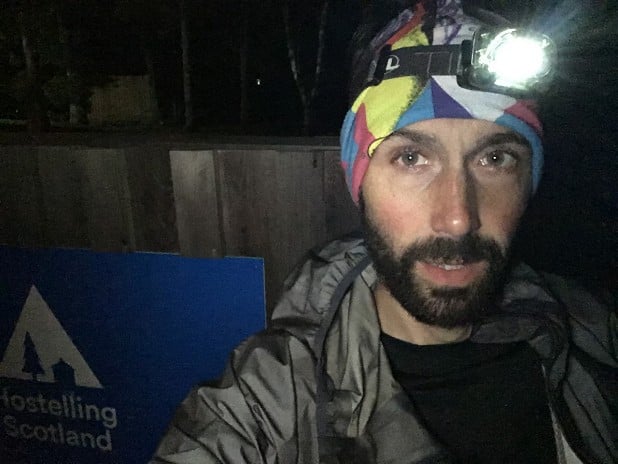
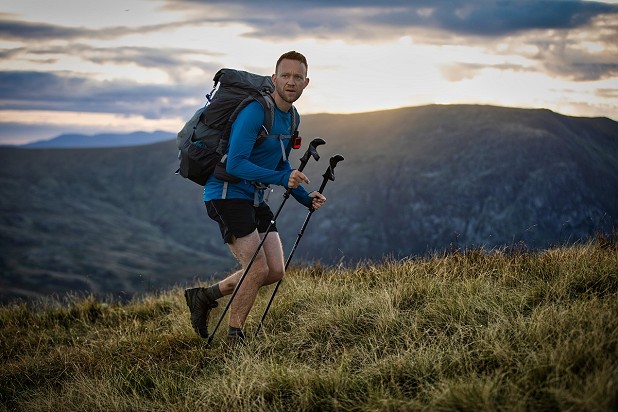
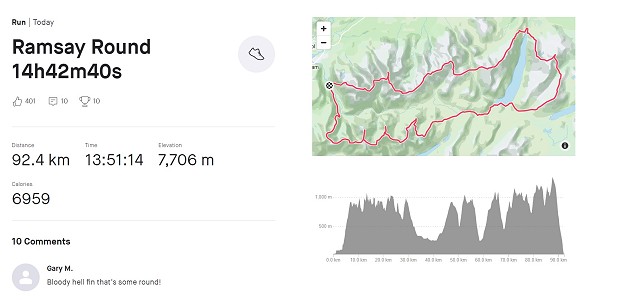
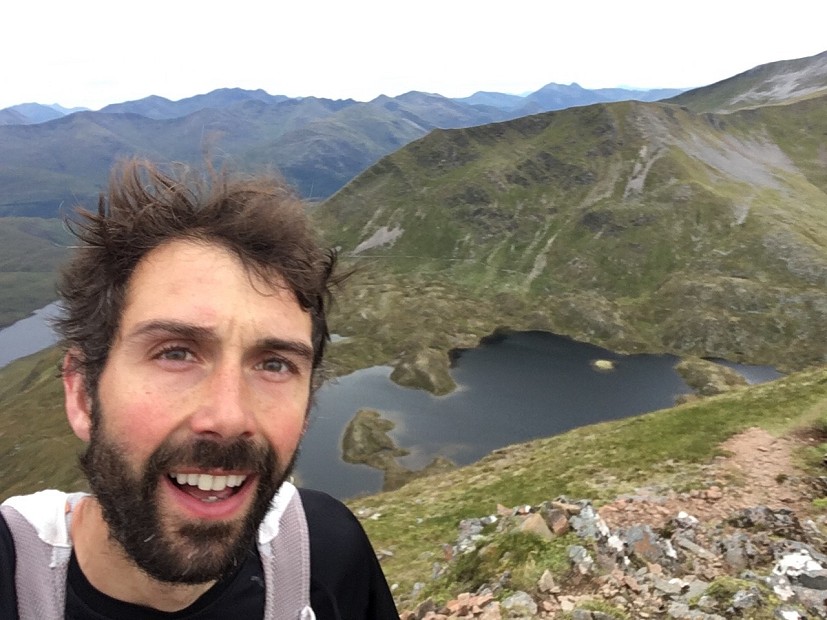
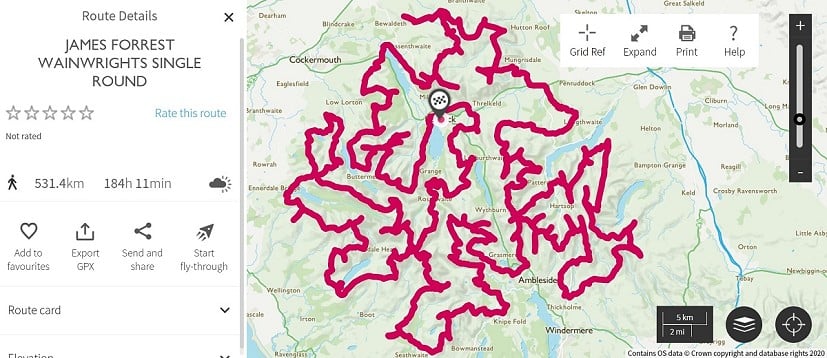
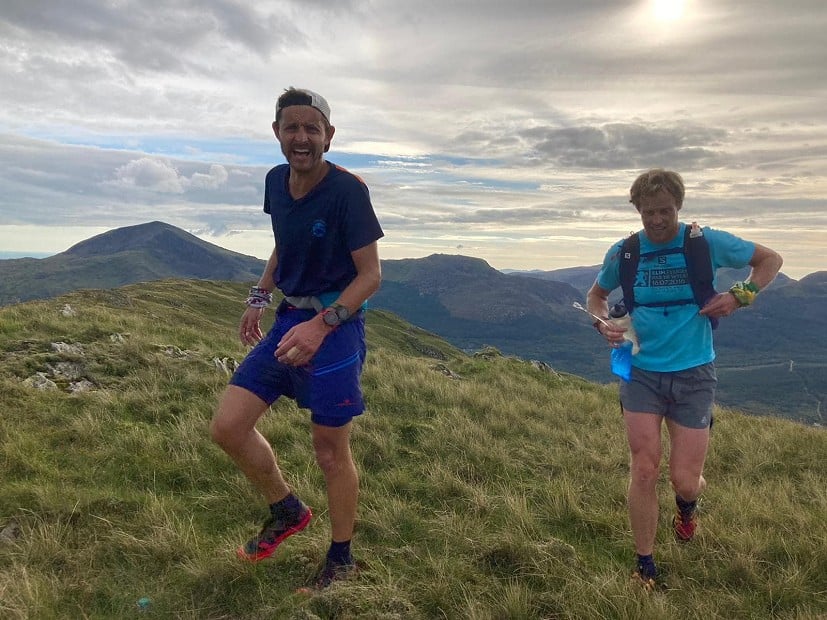
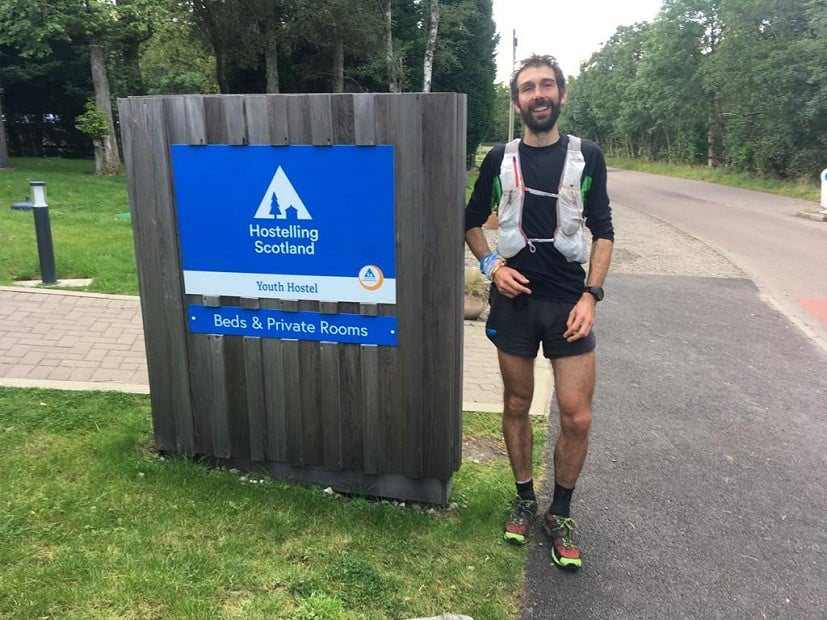


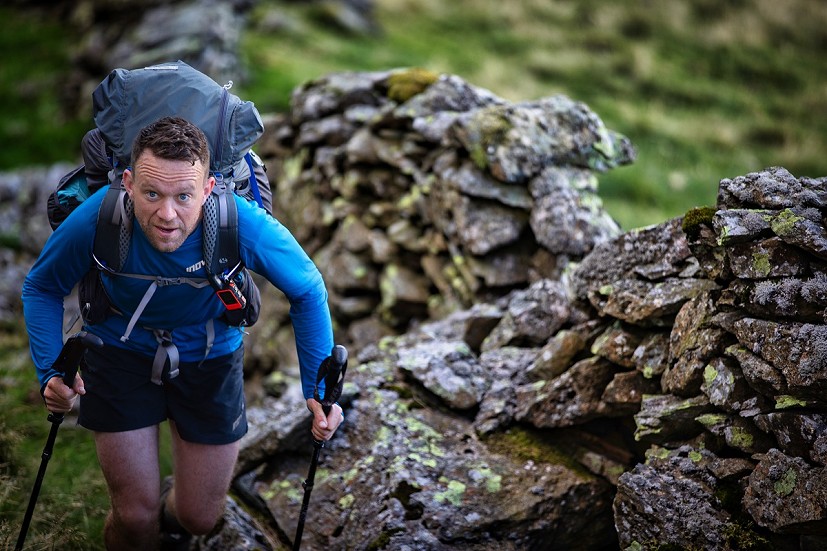

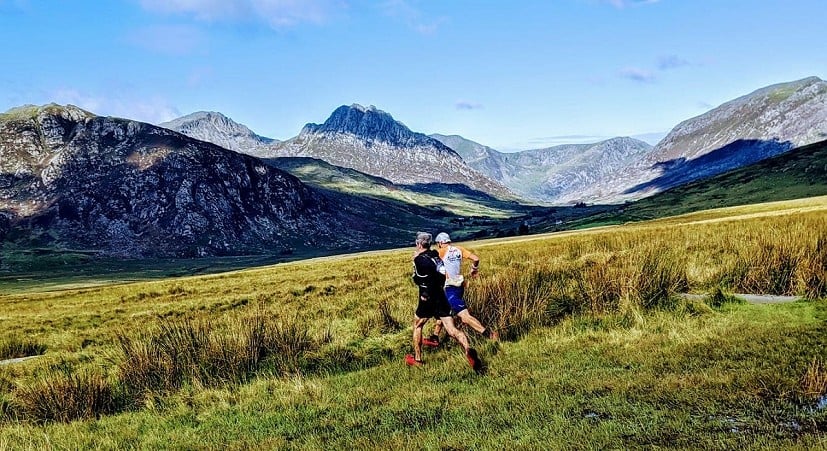

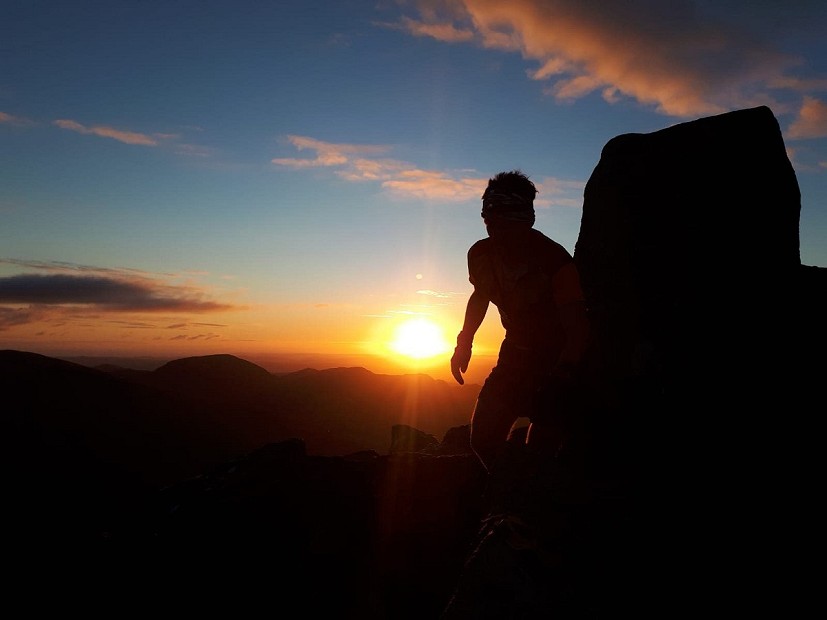
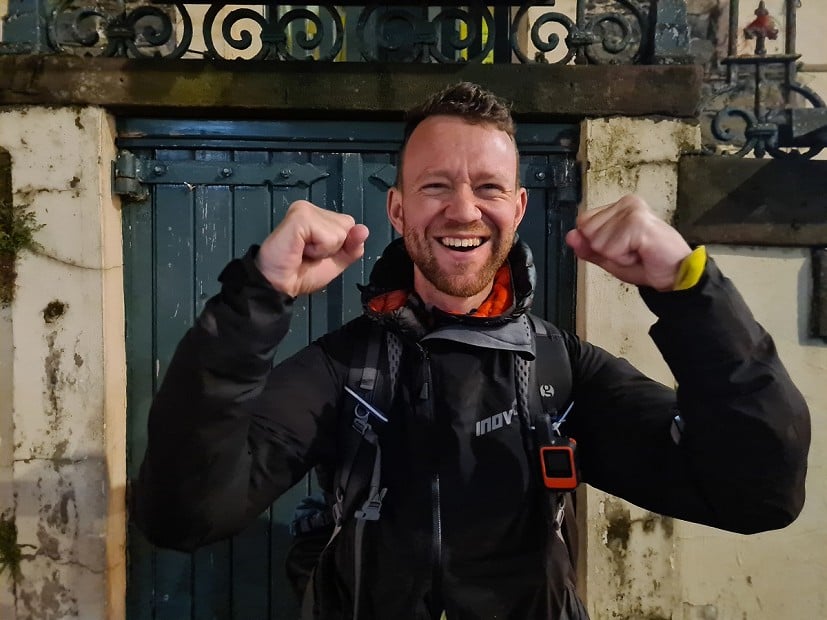
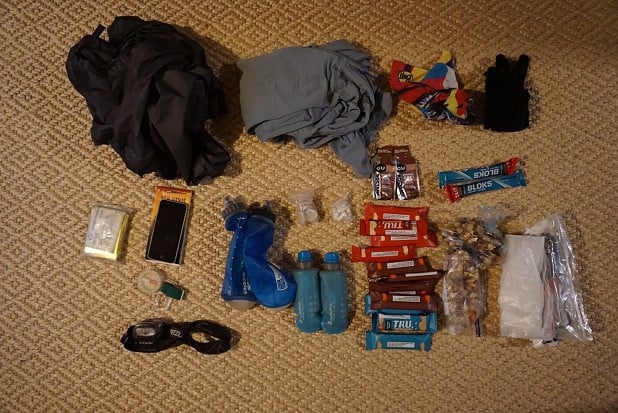
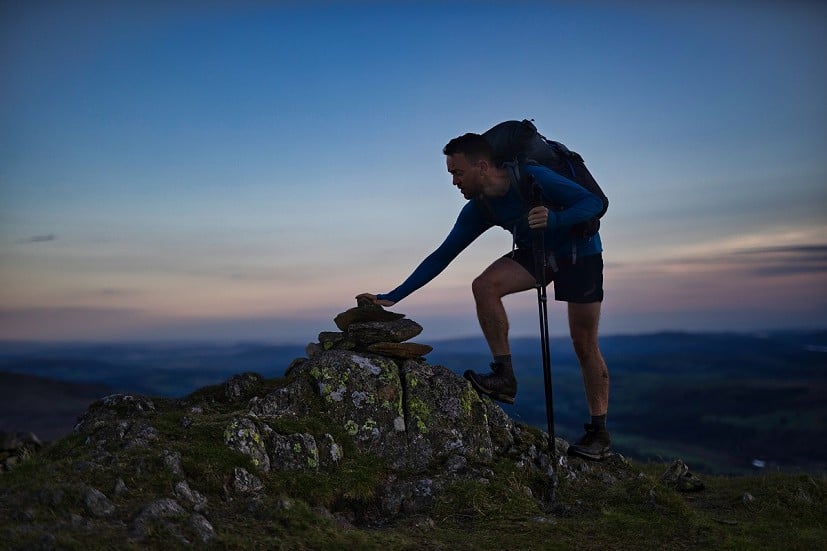
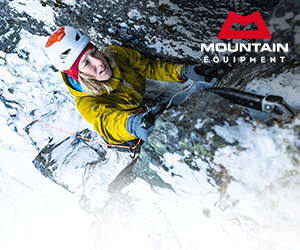





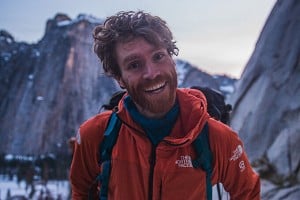
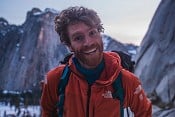

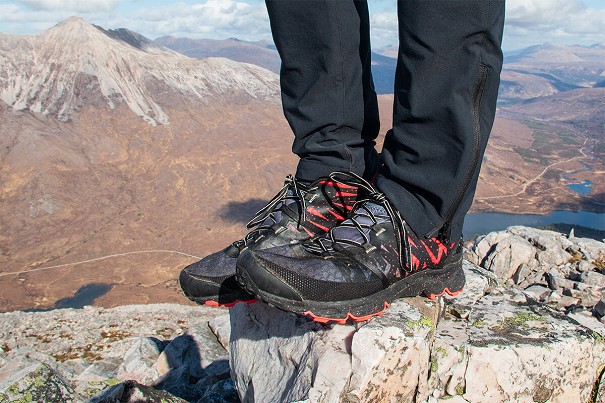
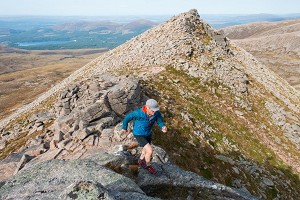
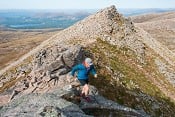
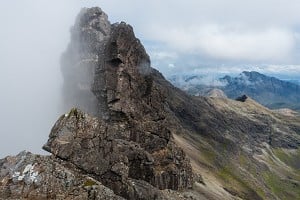
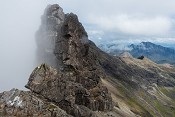
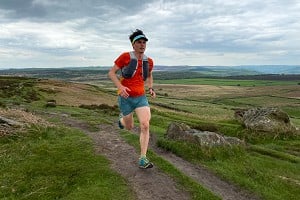
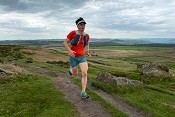
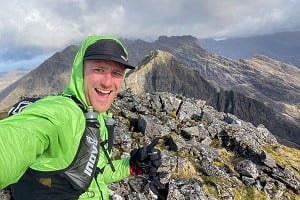
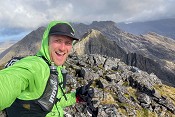
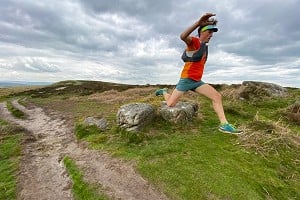
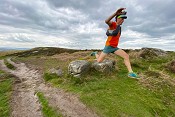
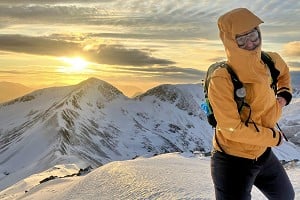
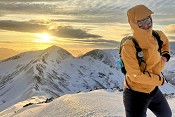
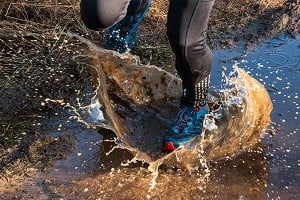
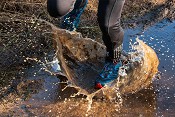

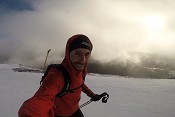
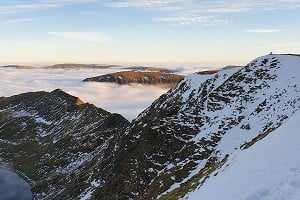
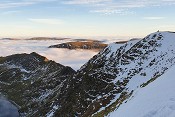

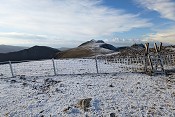




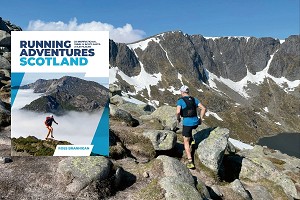



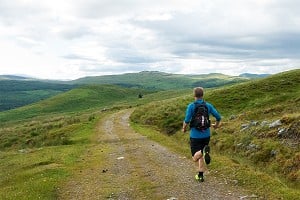
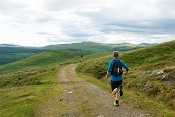
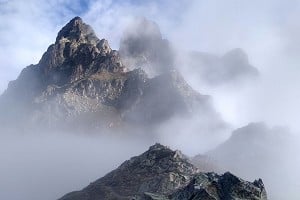
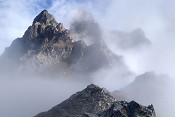
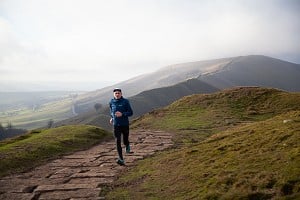


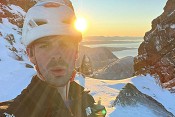
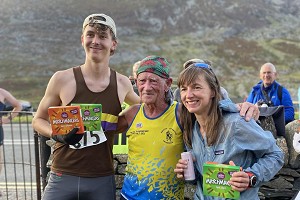
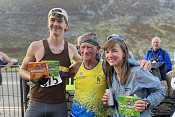
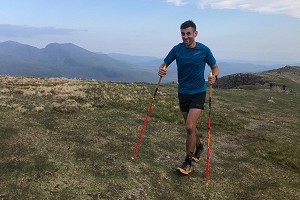
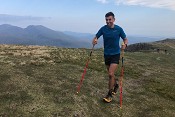
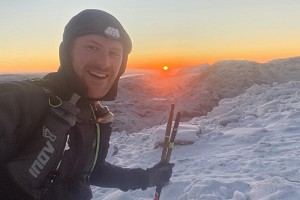
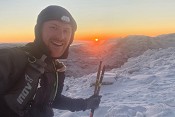
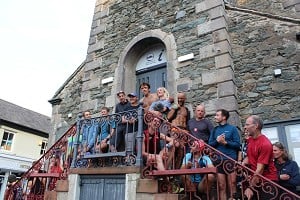
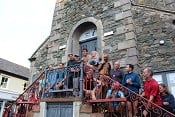


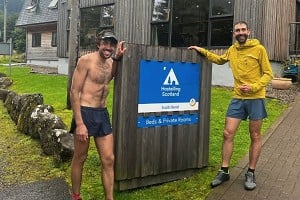
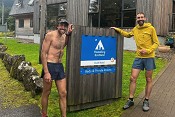
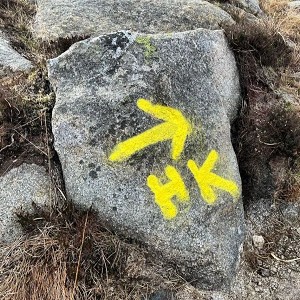
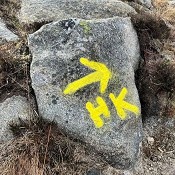

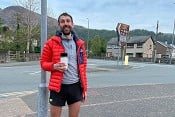
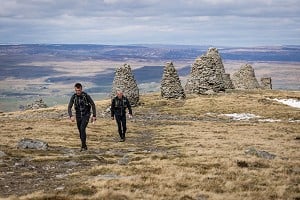
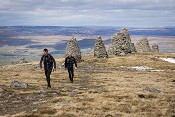
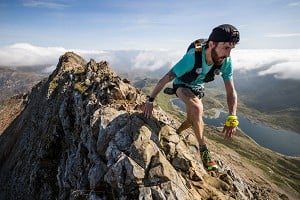
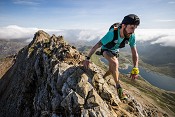

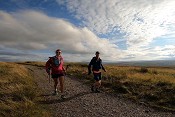
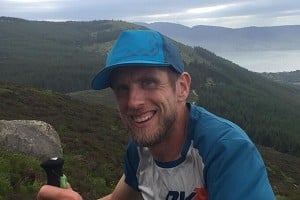
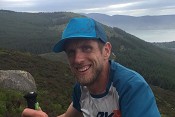
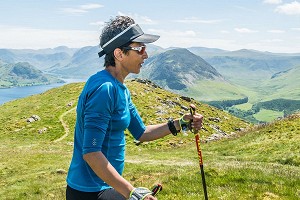
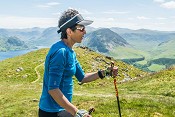
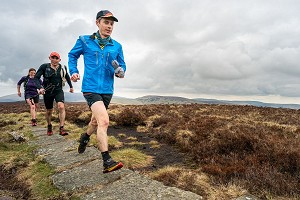
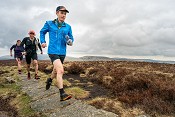
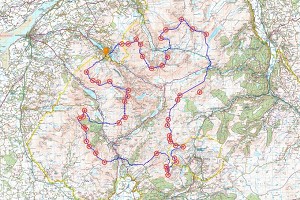
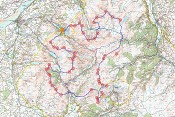

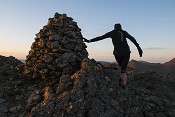

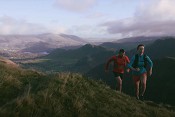
Comments
Math - you are (and have always been) my hero.
I still can't believe that you went for it, then went for it again. Truly inspirational...
That said, so are all the others!!
To this I would add Ian Stewart's Cairn Gorm 400k 'Park Run'.
What was that then? I like hearing about bonkers, inspirational achievements.